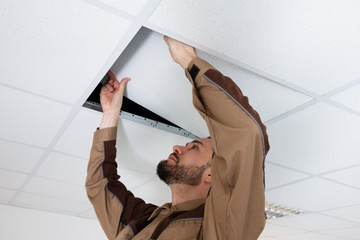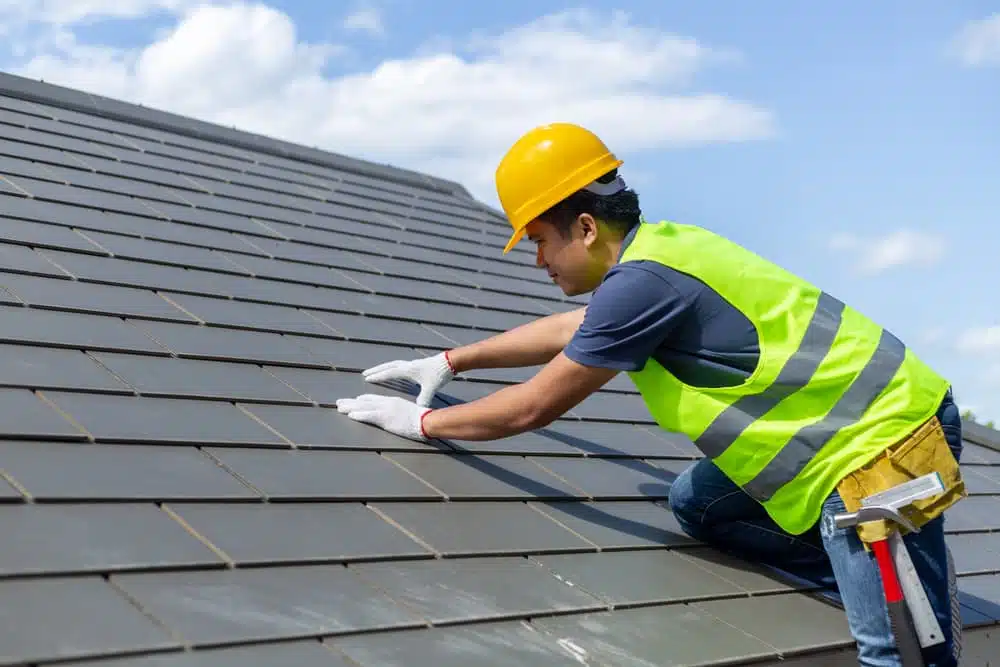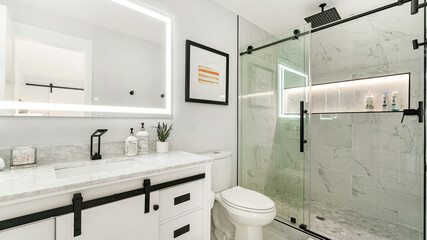The ceiling of your home is a vital part of its structure, and it inevitably goes through wear and tear. Addressing damage promptly helps to minimize structural problems and maintain your home’s beauty. Contact Ceiling Repairs Perth for professional help.
Minor types of damage like drywall cracks can be an indicator of larger trouble that may not be visible. Often, these cracks can be resolved easily by following our guide:
Cracks are common in homes, and they can be caused by structural movement, settling, temperature changes, or poor workmanship. However, some cracks can indicate serious problems that need to be addressed immediately. If you notice cracks in your ceiling, it is important to understand how they should be repaired so that the problem doesn’t worsen. There are several types of ceiling cracks, and each type requires a different repair method.
Hairline cracks are usually cosmetic and can be easily repaired with joint compound or drywall mud. Cracks that are straight and don’t affect the integrity of the home are also usually cosmetic and can be repaired with a little bit of patience. However, any crack that is accompanied by water damage should be inspected by a professional as soon as possible to determine the cause and appropriate repair approach.
When repairing ceiling cracks, be sure to remove any loose or crumbly material from the damaged area. Then, score around the crack with a utility knife to create a shallow cut. This will help prevent accidentally stripping the paper face off the undamaged drywall during the repair process. Next, cover the crack with drywall tape and apply a thin layer of drywall mud over it. Finally, sand the area smooth and paint.
Discolored cracks in a ceiling are often a sign of a water leak, so it is important to address the problem as soon as possible. Water leaks in the ceiling can lead to mold growth, wood rot, and even structural damage. If the cracks are accompanied by sagging or other signs of serious structural damage, you should contact a foundation repair contractor immediately to schedule an inspection and discuss your options for repairs.
If the ceiling cracks are accompanied by sagging, it may be necessary to install new drywall. This can be a difficult project to do on your own, but it is possible if you follow the proper steps. It is important to make sure that you have adequate lighting and the right ladder for the job. You should also be able to see the cracks clearly so that you can correctly align the drywall seams.
Water Damage
Water damage can be a serious issue in the ceiling of a home. If it is not addressed quickly, it can cause mold and mildew growth as well as structural problems in the roof or drywall. Water damage is often caused by leaky roofs, plumbing issues, and floods.
The first step in repairing water damage to a ceiling is to find the source of the problem and stop it. This may involve turning off the water at the main supply and finding out where the leak is coming from. After this, you need to dry the area as much as possible. For this, you should use fans and dehumidifiers to get rid of any moisture that has formed in the ceiling.
Once the drywall is dry, you can begin repairing the damage. Start by assessing the amount of water damage and removing any loose plaster or drywall. You should also check that the drywall is solid enough to repair. If it feels soft or spongy, then you will need to replace the damaged section.
If you are not comfortable doing this yourself, you can always hire a professional to do the job for you. However, this should only be done if the problem is severe. Otherwise, it could lead to more expensive repairs in the future.
If you are unsure about the severity of the problem, you can test the drywall by poking it with your finger. If it feels solid, then you can try to repair the damage by patching the affected areas. However, if the drywall is too soft or spongy then you will need to replace it completely. Be sure to replace any insulation above the drywall as well. If you are unable to replace the insulation, then you should use a vapor barrier on the new drywall to prevent any moisture from seeping through. Once you have replaced the drywall, make sure to paint it so that it blends in with the rest of the ceiling. This will prevent any water from seeping into the new drywall and causing more damage in the future.
Sagging
If left unattended, a sagging ceiling can become a serious safety hazard. It can cause damage to furniture and other items in the room, and can even fall and damage people. This is why it’s important to check for sagging in your ceiling regularly and have it repaired as soon as possible.
Sagging is most often the result of poor building work, however it can also be a sign of water damage or structural problems. It’s important to have a qualified professional assess the problem and recommend a repair method.
One way to fix a sagging ceiling is by reinforcing the support structure. This may involve adding additional joists or beams to redistribute the weight of the ceiling and prevent further sagging. It’s also a good idea to check for any leaks or sources of moisture in the ceiling. Moisture can weaken the integrity of plasterboard and contribute to sagging and cracking.
Another option is to add a wall perpendicular to the sagging section of the ceiling. This will reduce the load by half and can help stop further sagging. However, this is a more extensive project and should only be undertaken by a qualified contractor.
Sagging in ceilings is a common issue that can be easily fixed. With the right techniques, it’s easy to restore your home’s structural integrity and visual appeal.
If you notice any signs of sagging in your ceiling, contact Southern Ceiling Repairs for a fast and affordable solution. Our experienced professionals are committed to providing quality work that will leave you with a safe and beautiful ceiling. To learn more about our services or to schedule an inspection, contact us today!
Mold
Mold in ceilings is usually caused by water damage and can eat away at the material, leading to structural weakness. It also releases spores that can cause health problems including respiratory issues and allergic reactions. It is best to have any areas of mold in the ceiling removed by a professional to prevent the spread of spores to other parts of the home.
Before tackling mold on ceilings, it is important to protect your skin and eyes by wearing gloves, goggles, and a mask. You should also cover the floor with a plastic drop cloth to avoid spilling cleaning solutions on other surfaces. Once you have made these preparations, it is time to start cleaning the mold.
To remove mold, begin by scraping the surface of the ceiling to expose any paint that may be hiding underneath. Then, use a damp sponge to scrub the area, making sure to rinse the sponge regularly and drying it thoroughly when you are finished. It is also a good idea to open windows and use fans in the room to allow it to air out as much as possible.
If you are unable to remove the entire section of your ceiling that is affected by mold, you can patch it. However, it is essential to ensure that all of the mold spores are completely removed before you do this. Otherwise, it is likely that the spores will just grow back. To do this, it is necessary to sand down the area of the ceiling where the mold is located. Once the sanding is done, you can repaint the area to restore its appearance.
While this guide focuses on repairing and preventing common problems, it is important to have your home checked for leaks and damage annually. This will help you to prevent water leaks before they become serious and save you money on repair costs in the long run. Additionally, if you notice any cracks in your ceiling or any other signs of damage, it is important to have them repaired as soon as possible to reduce the likelihood of further complications.




